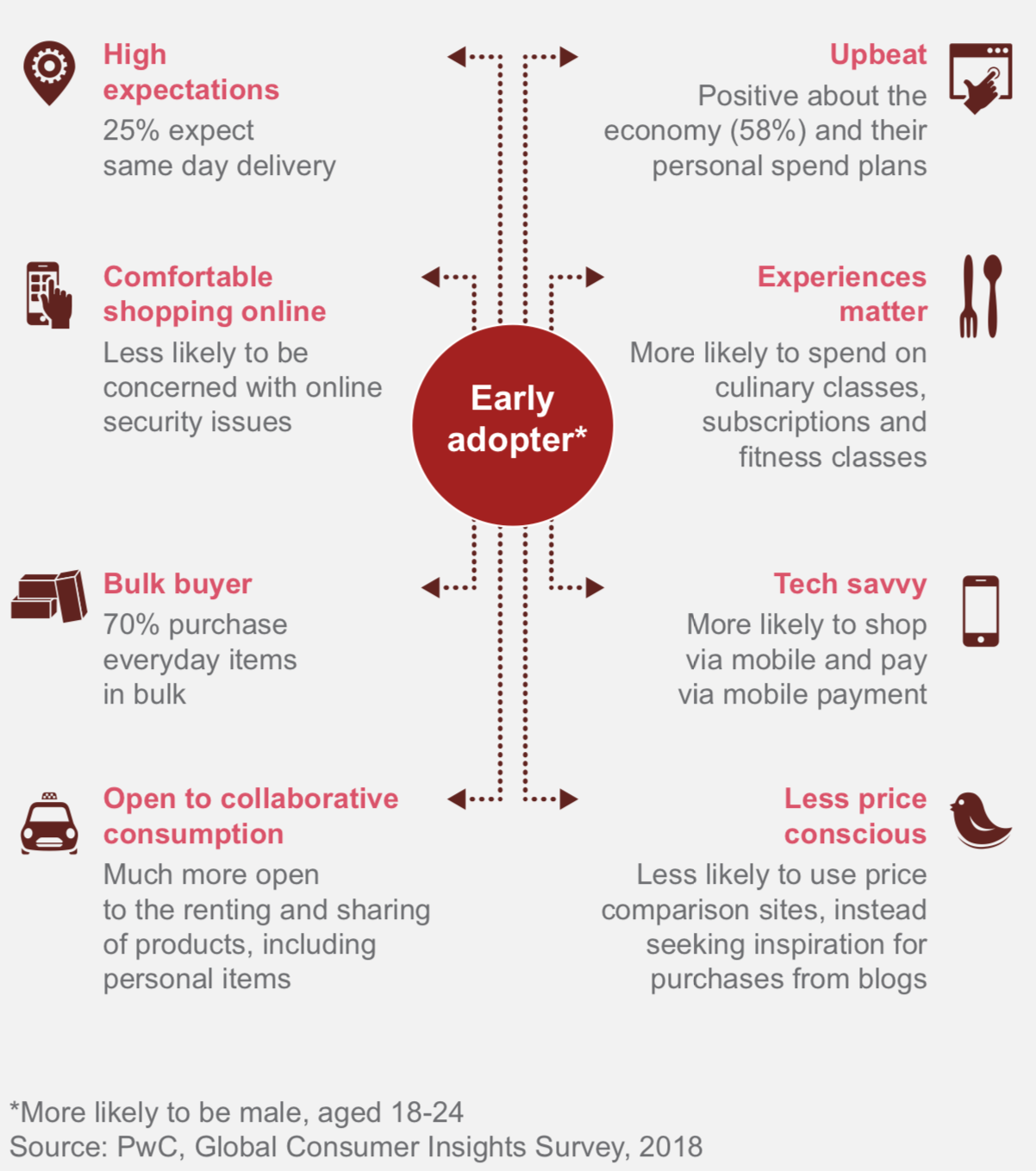The retail industry is coming into closer focus now with the previous holiday season complete and with more news of retail brick-and-mortar stores closing and/or going belly up. More so than ever before, customers had the choice of where they wanted to spend their money on gifts.
They can either cruise down to a physical storefront or head over to an e-commerce site to order and receive an item a few days in the future. While 51% of Americans prefer to do their shopping online, 49% would rather head to the physical location of the store.
This may sound as if the cards are beginning to stack in the favor of online storefronts, but in reality, 90.1% of all U.S. retail sales are generated by retailers with physical establishments while only 5.2% of sales come from online-only retailers. This large distance between online and brick-and-mortar retail establishments might show that there is a shift in the industry that showcases the need for retail businesses to adapt to technological advances to salvage their customer relationships.
In this article, we look to highlight the necessary digital transformations that retail businesses can and should use to increase their customer experience. We also plan to touch on specific artificial intelligence (AI) platforms that your retail organization can integrate and/or emulate in its quest to adapt to the shifting industry trends.
Retail Digital Transformation
The digital arena is changing rapidly for the U.S. retail industry, which could potentially be a huge problem seeing as it’s valued at just over $3.1 trillion. Retail businesses can effectively sidestep the type of profit margin free-fall that other, now bankrupt retailers have experienced by integrating digital transformation tools and platforms to manage their customers through the product life cycle. If a retail business is not anticipating industry trends and constantly innovating, consumers are not satisfied and will go elsewhere because they feel that their needs are not being adequately met.
On the other hand, companies that put more focus into innovating above and beyond the trends instead of focusing on their customers are bound to have a barren profit pool at the end of the day. Implementing technology for the sake of it can result in wasted time, effort and money, and can have damaging effects on customer satisfaction.

Therefore, it is paramount for retail businesses to have a flexible balance between technology and people-side innovations when navigating the process of digital transformation. If retail businesses have not yet embraced technology, then it's only a matter of time before they are forced to adapt to it. In the end, it is agility that enables long-term adaptation in the retail industry.
“Digital transformation is so all-encompassing that it makes more sense to approach it as a collection of related efforts heading to the same goals,”
-Dion Hinchcliffe, Vice President and Principal Analyst at Constellation Research
Digital transformation solutions must be integrated in a way that allows the retailer to evolve over time and connect to new customer touch points. Retailers need to commit to undertake a digital transformation of their business that includes innovative approaches to customer experience and personalization that allows them to differentiate themselves from their competitors.
If tools such as artificial intelligence (AI) platforms are your puzzle pieces, then the capable people in your organization that carry out the digital transformation are the puzzle masters. Giving your team the technological means to handle the omni-channel flow of customer order traffic will allow your organization to continue growing wherever you set up shop.

Artificial Intelligence (AI) and Retail Customer Experience
Customers are looking for much more than convenience. They’re looking for an experience. Customers crave the ability to order via whichever means they prefer, whether ordering online, phone, email, or in-store. And they want flexibility with returns and exchanges. A retail company needs to have technology on their side to maintain up-to-date inventory while also anticipating each customer’s needs by tracking their history to make the process more personalized.
To remain viable, retailers must remove any points of friction that the customer may be having in their experience. One of the major pain points is the lack of a unified experience across their online and offline channels. Addressing this ineffective process entails implementing an omni-channel retailing process that extends from brick-and-mortar locations to mobile-browsing, e-commerce marketplaces, social media, advertising, retargeting, and much more.

Customer experience personalization can leave the customer genuinely engaged and enthused about doing business with your company again. The effects that personalization and omni-channel retailing have on the customer is that it makes it fun for them once more. The more personalized that omni-channel retailing becomes, the more retailers will lean on AI and data science to personalize their advertising strategies even more.
The data from the AI solutions can identify opportunities for profit based on specific market demand and automatically adjust prices to correspond with the demand shift. Let’s look at a couple of AI platforms that retailers are looking to integrate into their omni-channel retailing approach to help them become sustainable now and in the future.
IMAGR
SMARTCART by IMAGR combines AI and computer vision, to allow shoppers to pair their smartphones with shopping carts using a unique QR code. The platform calls itself the world’s first truly-personalized shopping solution and allows the customer to skip the lengthy lines and enjoy hassle-free shopping in a fraction of the time. As the customer loads items into their cart, the items are automatically identified. When the customer is completed with their shopping trip, they just leave the store and are automatically charged for their items. Retailers that fully embrace IMAGR will ultimately have less overhead from not needing as many checkout clerks, thus they will be able to put more of their investments back into their business solutions to retain and grow their customer base.
MONA
Mona is an AI-powered mobile shopping assistant that gives customers immersive in-store, expert assistance. Mona will learn your unique fashion style, favorite brands, and your ideal price point(s) and shop for you while you relax. This personal shopping assistant searches for the best brands, stores, and prices and takes all customer feedback to apply for future searches. Retailers should take a long, hard look at the capabilities of Mona. The platform is made to be uber personalized and convenient, which are two of the main pillars of a successful omni-channel retailing approach. When customers have a smart assistant to show them around, it can make shopping easy while also adding a beautiful, smart and personalized layer over disparate shopping services and experiences.
The Future is Digital Transformation
Conventional retail establishments had their worst year on record in 2017 with 6,985 store closures, yet physical locations still represent nearly all U.S. retail sales. Also, 2018 was the worse year on retail sales. The sales dropped 1.9% in December compared with 2017. Last month was also the worst year on record for like-for-like sales, with 2018 recording 11 consecutive months of negative sales growth since January.
This tells us that the major contributor to these massive store closings and sales dropping are not the customer’s choice to do their shopping online, but rather to gravitate towards businesses that are focusing their futures on digital transformation. Through integrating an omni-channel retailing approach and one or more key AI platforms into its sales infrastructure, brick-and-mortar retailers can become more appealing to both new and existing customers.
Propane Agency - San Francisco
1153 Mission Street
San Francisco, CA - 94103
415 550 8692